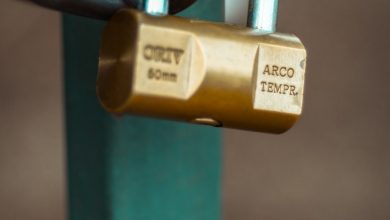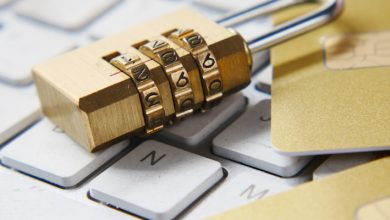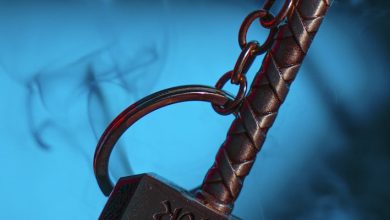How to Secure Your Crypto Assets on Exchanges

- Understanding the risks of storing your crypto assets on exchanges
- Best practices for choosing a secure cryptocurrency exchange
- Implementing two-factor authentication to enhance security
- Utilizing hardware wallets for added protection
- Regularly monitoring your exchange accounts for suspicious activity
- Creating strong and unique passwords to safeguard your assets
Understanding the risks of storing your crypto assets on exchanges
One of the key risks associated with storing your cryptocurrency assets on exchanges is the potential for hacking and security breaches. Exchanges are prime targets for cybercriminals due to the large amounts of digital assets they hold. In recent years, there have been several high-profile cases of exchanges being hacked, resulting in millions of dollars worth of cryptocurrencies being stolen.
Another risk of keeping your crypto assets on exchanges is the lack of control you have over your funds. When you store your assets on an exchange, you are essentially trusting the exchange to keep them safe. However, exchanges can go offline, become insolvent, or even shut down completely, leaving you without access to your funds.
Additionally, storing your crypto assets on exchanges exposes you to the risk of regulatory intervention. Governments around the world are beginning to crack down on exchanges that do not comply with anti-money laundering (AML) and know your customer (KYC) regulations. If an exchange is shut down due to regulatory issues, you could lose access to your funds indefinitely.
Best practices for choosing a secure cryptocurrency exchange
When choosing a secure cryptocurrency exchange, it is important to consider a few best practices to ensure the safety of your assets. Here are some key factors to keep in mind:
- Look for exchanges that have a strong reputation in the industry. Research the exchange’s history, security measures, and reviews from other users to gauge its reliability.
- Check if the exchange is regulated and compliant with relevant laws and regulations. This can provide an extra layer of security and protection for your funds.
- Opt for exchanges that offer two-factor authentication (2FA) to add an extra layer of security to your account. This will help prevent unauthorized access to your funds.
- Consider using a hardware wallet to store your cryptocurrencies offline, rather than keeping them in your exchange account. This can reduce the risk of hacking and theft.
- Avoid sharing sensitive information such as your private keys or passwords with anyone. Keep this information secure and confidential to protect your assets.
By following these best practices, you can minimize the risk of security breaches and protect your crypto assets on exchanges. Remember to stay informed about the latest security trends and updates in the cryptocurrency industry to stay one step ahead of potential threats.
Implementing two-factor authentication to enhance security
Implementing two-factor authentication (2FA) is a crucial step in enhancing security when dealing with crypto assets on exchanges. 2FA adds an extra layer of protection by requiring not only a password and username but also something that only the user has on them, such as a piece of information only they should know or have immediately to hand – such as a physical token.
Utilizing hardware wallets for added protection
For added security when managing your crypto assets, consider utilizing hardware wallets. These devices provide an extra layer of protection by storing your private keys offline, making it harder for hackers to gain access to your funds. Hardware wallets are considered one of the safest ways to store cryptocurrencies because they are not connected to the internet, reducing the risk of cyber attacks.
When using a hardware wallet, you will need to connect it to your computer or mobile device to make transactions. This means that even if your computer is compromised, your private keys remain safe on the hardware wallet. Some popular hardware wallets include Ledger Nano S, Trezor, and KeepKey. These devices are user-friendly and offer a secure way to manage your crypto assets.
By keeping the majority of your cryptocurrencies in a hardware wallet, you can protect yourself from potential security breaches on exchanges. While it’s convenient to trade on exchanges, it’s important to remember that they are susceptible to hacks. By using a hardware wallet, you can have peace of mind knowing that your funds are safe and secure.
Regularly monitoring your exchange accounts for suspicious activity
Regularly monitoring your exchange accounts for suspicious activity is a crucial step in securing your crypto assets. By keeping a close eye on your accounts, you can quickly identify any unauthorized transactions or login attempts. This proactive approach can help you prevent potential security breaches and protect your investments.
It’s important to set up alerts and notifications for any unusual activity on your exchange accounts. This way, you can be immediately notified of any suspicious behavior and take action to secure your assets. Additionally, regularly reviewing your transaction history can help you spot any inconsistencies or irregularities that may indicate a security threat.
In addition to monitoring your accounts, it’s also advisable to use strong, unique passwords for each exchange platform you use. This can help prevent unauthorized access to your accounts and minimize the risk of security breaches. Consider using a password manager to generate and store complex passwords securely.
By staying vigilant and proactive in monitoring your exchange accounts for suspicious activity, you can enhance the security of your crypto assets and minimize the risk of theft or fraud. Remember, taking these simple steps can go a long way in protecting your investments in the volatile world of cryptocurrency.
Creating strong and unique passwords to safeguard your assets
To ensure the security of your crypto assets on exchanges, it is crucial to create strong and unique passwords. Using common or easily guessable passwords can leave your assets vulnerable to hackers. Here are some tips to help you safeguard your assets:
- Include a mix of uppercase and lowercase letters, numbers, and special characters in your password.
- Avoid using personal information such as your name, birthdate, or address in your password.
- Do not reuse passwords across multiple accounts, as this can increase the risk of a security breach.
- Consider using a password manager to generate and store complex passwords securely.
- Regularly update your passwords and enable two-factor authentication for an added layer of security.
By following these password best practices, you can significantly reduce the risk of unauthorized access to your crypto assets on exchanges. Remember, the security of your assets ultimately depends on the strength of your passwords.



